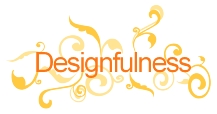Breakthrough ideas are easier to identify than ever before. Does that sound like a crazy concept? It's not so unbelievable, however, if companies can re-orient their attitude toward a designer approach which is customer-centered—one that embraces thinking like a customer.
The trend in business during the last 25 years, coming out of Six Sigma and other techniques, has been toward standardization and reduction of variability. This direction, of course, is fine in a company-centric world that only cares about efficiencies in internal processes. However, this strategy amounts to ratcheting down of existing systems, not designing new ones.
Designfulness, on the other hand, is the philosophy that is needed to develop customer-centered innovations. Tim Brown, CEO and President of IDEO, in "Design Thinking" (Harvard Business Review, June 2008) has given us magnificent stories of organizations that developed new markets by giving customers more desirable experiences driven by the customer-centered insights of their designers. It's a great read.
One example discusses the creation of a new product, the Coaster bike. Shimano, a Japanese manufacturer of bicycle components, when faced with smaller growth in its high-end racing and mountain bikes, used design techniques to create a market for baby-boomers where virtually none existed before. Their thorough research, with people outside of their existing customer base, told them that many adults were intimidated by the prospect of purchasing a bike today-because of the complexity and cost of buying and maintaining bikes with lots of gears, gadgetry, accessories and specialized clothing. These adults were also concerned by the danger of cycling on roads that were not bicycle-friendly.
The solution to these problems was development of the concept of Coasting bikes, with no controls on the handlebars because braking occurred by backpedaling (what a throwback) and no cables around the frame because they developed an onboard computer which would shift the three gears automatically. They also created padded seats which opened up to reveal room for helmet storage. Finally, they launched a public relations campaign in conjunction with local governments and cycling organizations that listed safe places to ride on their website (with the ability for customers to add their own local places for the benefit of other riders).
The truly remarkable aspect of this story is that the inspiration for this new direction was sparked by the components supplier (Shimano) rather than the bike manufacturers themselves. Bike suppliers were allowed to design their own versions of these bikes. The process was systematic but creative, structured around a customer-centered requirement to deliver the least impact on the customer and the greatest benefit. Designfulness, in fact, always results in game-changing ideas that make it easy for customers to change to an outcome that provides them with better value.
What are the characteristics that you want your organization and its teams to have? Among them have to be creativity, excellence in planning, intuitiveness, willingness to take risks, curiosity, vision, discipline, and a source of great ideas. Aren't these the traits that you find in a designer? The words ‘plan' and ‘idea' are even synonyms for design.
Further, Milton Glaser, quoted in How to Think Like a Great Graphic Designer, emphasized that, to a designer, "the reward is...doing things that have quality, that are...powerful, and that reach people." Designers excel because they reach people. For your organization, these people are your customers. Designers see things differently. They fully understand what currently exists in an industry or an organization and they push it forward or stretch it to make it better for the customer.
Train your organization to use its design capabilities. Designer thinking will become more and more important in every organization's relationships with its customers. It is rooted in the feeling of being people-centered and the desire to make customers' experiences better. It is the source of true organic growth that starts with focusing on how the capabilities, which an organization already has, can be designed to improve customers' lives.
